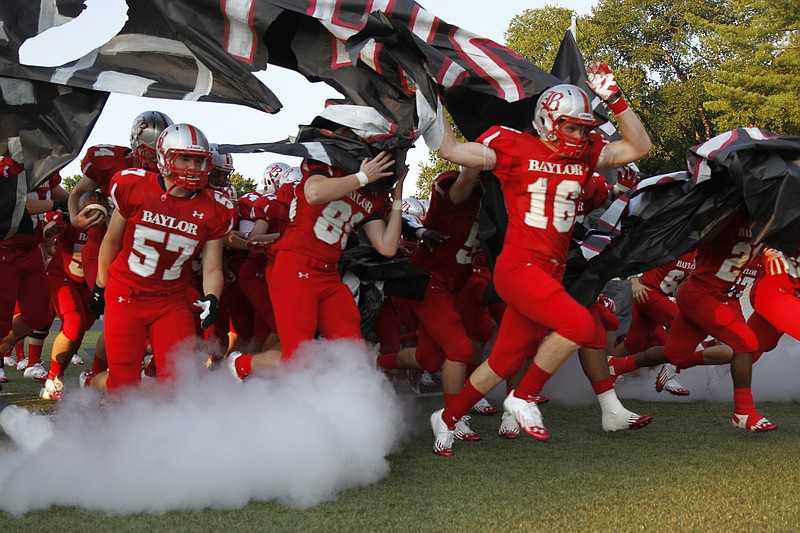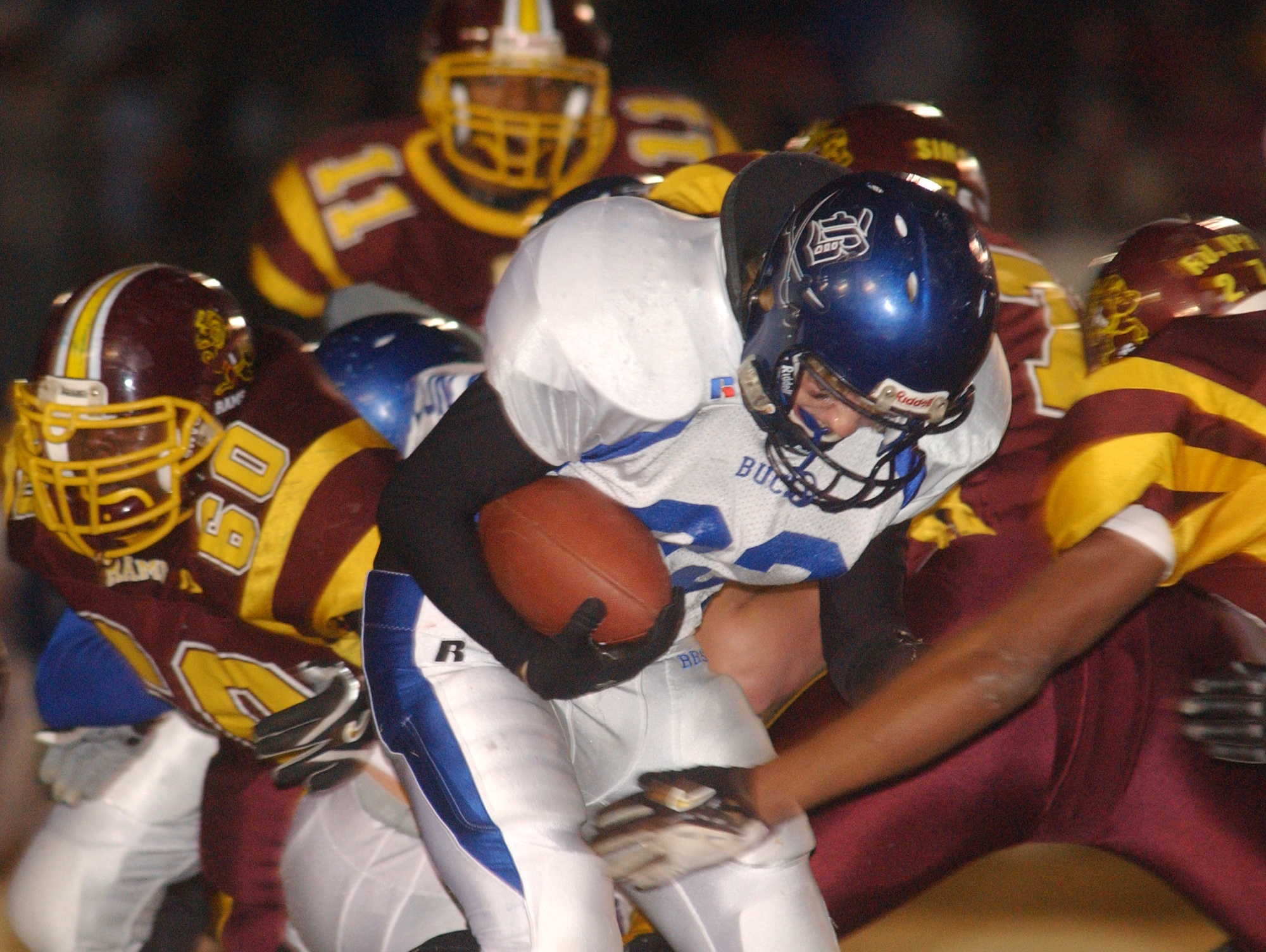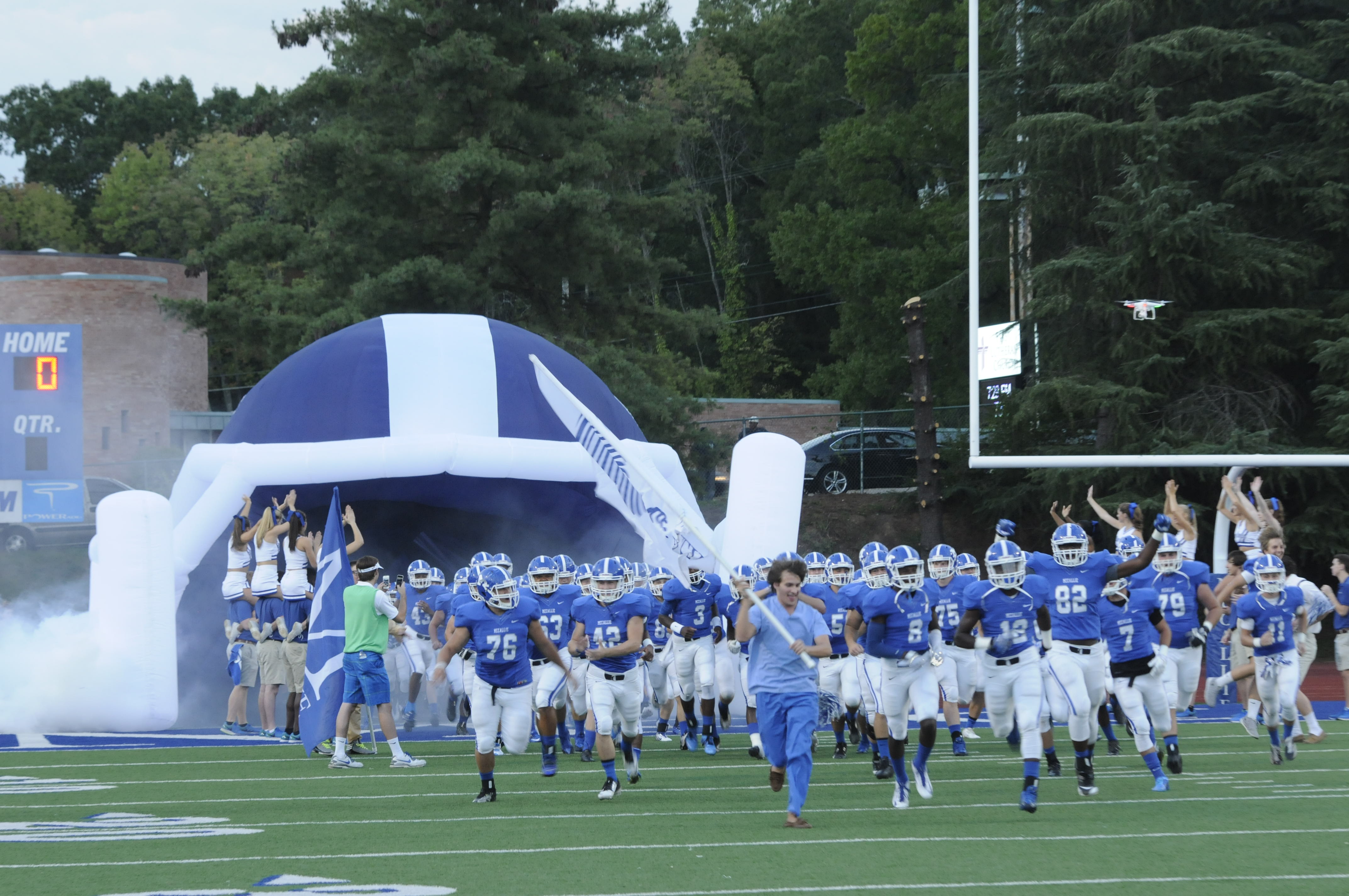Frustration was the initial reaction by many public school coaches and administrators to Thursday's TSSAA Legislative Council decision rejecting a proposal to split all public and private schools into separate divisions.
The potentially landmark decision that would have jettisoned 24 private schools without their input was denied by a narrow 5-4 vote. Instead, 16 months after the original proposal was made, the council gave the TSSAA staff two more months to come up with tweaks to the association's constitutional bylaws that will address the main concerns of the public schools that have been pushing for a complete split.
Whatever changes are made to the bylaws will be voted on this fall and go into affect for the 2017-18 school year.
Despite griping from many public schools statewide after the vote, a bit of patience might prove this was not only the fairest but also the wisest decision for the long-term health of all three parties - both public and private schools and the state's high school governing body.
"Now we know what specific concerns to address and how to address them, and I feel confident our member schools, on both sides, will be satisfied with the changes we propose," TSSAA executive director Bernard Childress said.
Childress added that he and his staff already have a plan for how to rewrite the bylaws that pertain to the most critical concerns - most notably stricter recruiting rules and student employment, or work study, which is the practice of allowing a student or his or her immediate family to work at a school and use the money made to help pay the student's tuition.
All member schools sign a contract each year stating they will abide by the organization's rules. Childress added that the TSSAA would rely on member schools to police themselves not only in recruiting but also with the work-study issue and that any school that is reported and found to have violated those rules will be dealt with severely.
Thursday's decision to tweak the system rather than blow it up also avoided a rush to judgment that could have affected all parties negatively, including opening the TSSAA to a potential lawsuit and likely crippling the smallest private schools that don't have the financial backing to offer the amount of aid it would take to compete on a larger scale.
In the public schools' best interest, Thursday's decision also prevented the private schools that would have been sent to Division II from following a path blazed by the original split in which the larger private schools used all the resources at their disposal to create a competition gap between themselves and public schools.
"I voted for the split because that's what the majority of the schools I represent asked for," said Soddy-Daisy principal Danny Gilbert, who represents the Chattanooga area on the council. "But I think a split would have been bad for the public schools in the long run because it would have allowed more private schools to offer financial aid to athletes, which would mean more public school kids playing in D-II."
AVOIDING A LAWSUIT
Two sources who sat in on the closed-door executive session that was held before Thursday's vote confirmed there was discussion about the likelihood a private school would file a lawsuit against the TSSAA if a complete split was executed. After the legal battle with Brentwood Academy, whose lawsuit circulated the courts for a decade and cost more than $1 million in legal fees, the TSSAA is not in financial position to weather another potentially drawn-out court battle.
By putting the onus on the private schools to decide if they want to stop allowing work-study programs so they can remain in the public school division (D-I) or continue that practice and join D-II, the TSSAA also closes the door on members' opportunity to sue.
Those schools that opt to join D-II not only can continue providing work-study programs but also can offer need-based financial aid for prospective student-athletes.
Following Thursday's decision, the smallest private schools that don't use work-study programs or give financial aid to athletes will continue playing against public schools and have their enrollment multiplied for classification purposes.
"There's a bunch of us who don't want to be in an arms race athletically," said Grace Academy athletic director Les Compton. "We don't want to give financial aid to athletes. We can't afford it. While we're competing against other faith-based schools, look at places like Trousdale County or Lewis County. There are no other schools in their county. They get every kid in their county and they all go for free. That's a nice advantage.
"The public schools said this all started as a way to level the playing field, but that's the most hypocritical phrase I've ever heard. It's athletics. Everybody is looking for an advantage. What they mean is we don't have the upper hand now."
MONITORING RECRUITING
Although it's been discussed for decades, it wasn't until recently that the word "recruiting" was brought up and discussed at an open TSSAA meeting.
Council president Dan Black, principal of Bradford High, asked about the proposal for a complete split: "Is this based on recruitment?" He was answered quickly by Maplewood principal and council member Ron Woodard, who said, "Yes, it is based on recruiting practices by the private schools. I have schools I represent who say that if you go to middle school games you'll see private schools there recruiting their kids. They're recruiting kids who are impoverished and couldn't otherwise afford to go to a private school but can because they're athletes."
The recruiting argument falls hollow on most private school coaches and administrators, who are quick to point out that public schools also recruit. In fact, Childress pointed out that the last eight proven recruiting violations were committed by public schools.
According to members of the council, Board of Control and the TSSAA directors, most of the complaints by public schools are directed toward fewer than five of the private schools that currently compete in Division I.
"I've never had any problem with the bigger private schools like Baylor and McCallie, because I understand how they have to operate," Tyner athletic director and football coach Wayne Turner said. "And most of the smaller privates that are still in our division are doing it the right way.
"But there are a couple - probably one in Nashville, one in Knoxville and one around here that come to mind - who aren't, and those are the ones who are giving the rest of them a bad rap."
Speaking on the condition of anonymity, the mother of one former athlete who attended a Chattanooga private school that competes in Division I - where schools are not allowed to give need-based financial aid - she was provided with money from the school to pay for her son's tuition. The mother admitted she could not have afforded to send her son to the school without financial help, and she said she gave her bank account number to a school administrator and each time a tuition payment was due the exact amount needed to cover the cost would appear in her account.
She then would write a check from her account, using the money that had been deposited by the school to cover the tuition. In return she was asked to help take up money at sporting events in which her son did not participate. However, she said she never actually worked any of those games.
"Once we make changes to our bylaws, things like that will be dealt with severely if we have folks who are willing to inform us about it," Childress said. "There are always people in those communities who are aware of the family's financial situation and how they're able to afford sending their kid to a private school. We just have to be told where it's happening in order to investigate it.
"I know the issue started with public schools pointing the finger at private schools, but there will be some public schools who won't be real happy with some of the recruiting rules we propose, because it will also affect things they have been doing."
THE GAP GROWS WIDER
Had there been a complete split, many of the current coaches and administrators at private school programs currently competing in the public school division said they believe their programs would have done whatever was necessary to survive, including poaching the best remaining public school players with as much financial aid as they could afford.
At the time of the original split in 1997, when schools that opt to give financial aid to student-athletes were forced into a separate division, several public school administrators were quoted as saying they believed the move had "put the private schools in their place." Instead, the D-II football league now boasts multimillion-dollar facilities, major college prospects on nearly every roster and coaching staffs that include former college coaches and assistants who were head coaches at the public school level.
"Division II has turned into a small college league," said one college football coach who recruits the Chattanooga area. "There's more money, which means better facilities and more coaches, which attracts better athletes. It's like comparing an SEC program with a small I-AA school in terms of what private schools are doing compared with most of the public schools.
"It may have been on a smaller scale, but the smaller private schools could have done something similar to what the D-II league is now."
Phil Massey spent the first 13 years of his coaching career at a public school program, where his Haywood County teams narrowly lost state-title games to Cleveland in the mid-1990s. He later made the switch to coaching in D-II, where he has also guided Baylor to two state finals.
"Coming from a 4A high school with three assistants to now having eight and two are former head coaches, that's a big difference," Massey said. "I'm speaking as a guy who spent a lot of time coaching public school teams, but there's really no comparison anymore. Division II programs made the commitment to take that next step after the split."
Since the TSSAA split teams that give financial aid to student-athletes in 1997, Baylor has won 30 of the 36 games it has played against Chattanooga-area public schools, including a streak of 23 straight victories. Baylor hasn't lost to an area public school since a six-point defeat to Rhea County in 1999, a season in which the Red Raiders finished winless.
In the 36 meetings with area public schools prior to the split, Baylor was 26-10.
Meanwhile McCallie is 27-3 against area public schools since the split, having gone 20-10 in the same number of meetings with public schools before that. Also, those two programs have been beating area public school competition by an average of nearly two touchdowns more than their win margins prior to the split.
Even during McCallie's struggles of 2013, when it finished 4-8 overall, it had little trouble with public school opposition, beating a Cleveland team that reached the Class 5A semifinals 55-35 and whipping 6A McMinn County by 34 points.
"It's light-years ahead of where we were before the split," McCallie coach Ralph Potter said. "There's a qualitative difference with how a game in our league feels and sounds now.
"Once our people saw what we were competing against, with the facilities and the size of the coaching staffs at other Division II schools around the state, we had to examine what we were doing. All our alumni bases are very competitive and want to be the best, whether that's athletics, academics, music department or whatever."
Last year Ensworth whipped perennial Class 6A power Maryville six touchdowns to none in a preseason scrimmage. Even the weaker D-II schools are now at a level far above most public school competition. Nashville's Pope John Paul II has lost 14 of its last 15 games against D-II foes but has won all six matchups with public schools during that span.
"It's two different trajectories," said one Division II coach. "Twenty years ago public schools had the best athletes and some of the best facilities. That's not the case now - not even close."
But regardless of whether Thursday's decision proves to alleviate many of the public school coaches' concerns, there will remain a group who will continue to call for a more dramatic change. That means there's a good chance that yet another proposal will be made for a complete split in the coming years.
"Here's my solution: You either put them all back in with us or move them all into their own division," said Meigs County football coach Jason Fitzgerald. "If it's fair for the small schools to have to play the private schools, then everybody should have to. Let's see how much the bigger public schools start complaining if they have to play Ensworth or Baylor or McCallie.
"The only fair solution is to either put them all back in or move them all to Division II."
Contact Stephen Hargis at shargis@timesfreepress.com or 423-757-6293.


